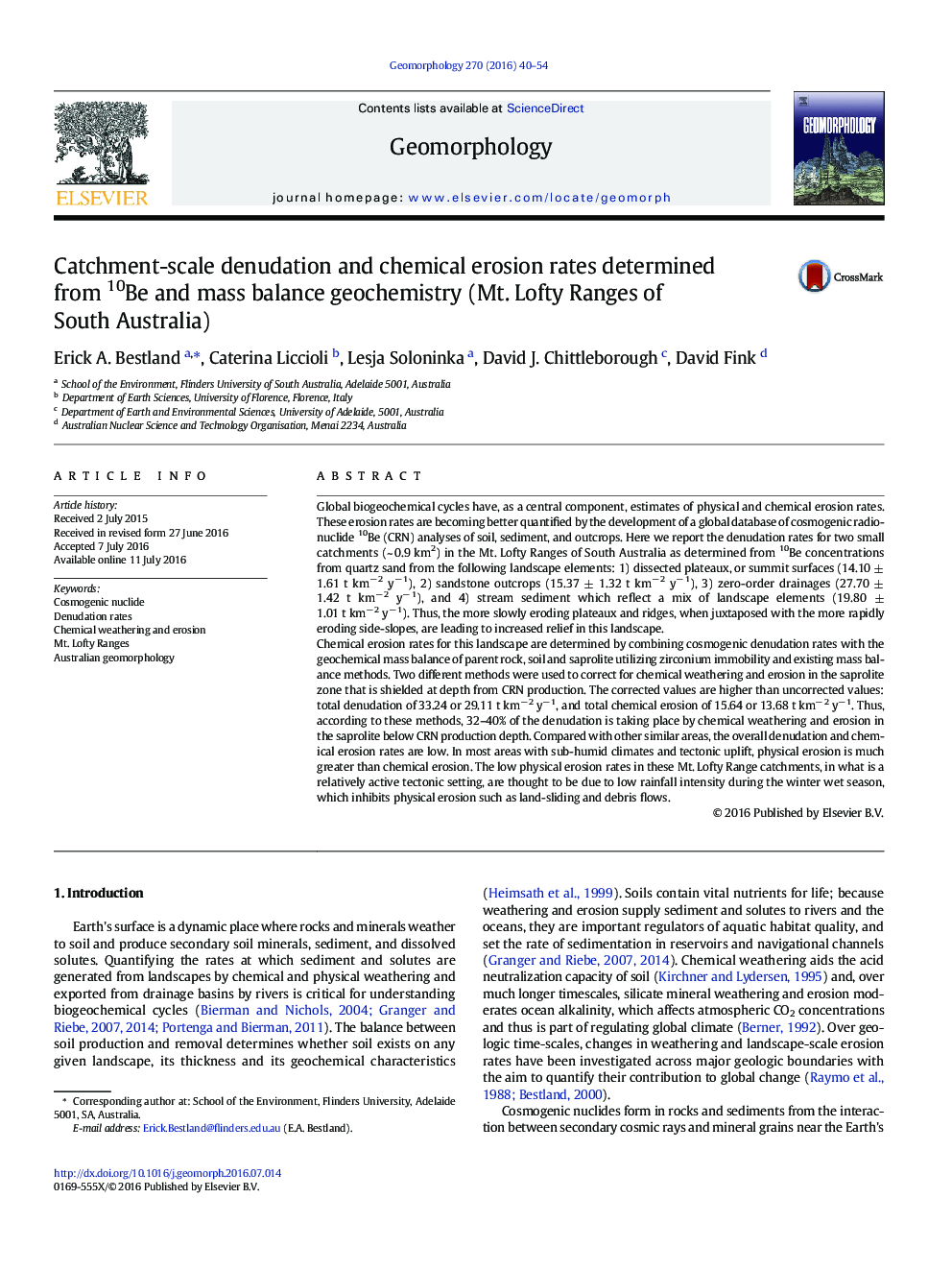| کد مقاله | کد نشریه | سال انتشار | مقاله انگلیسی | نسخه تمام متن |
|---|---|---|---|---|
| 4683893 | 1635379 | 2016 | 15 صفحه PDF | دانلود رایگان |

• Denudation and chemical erosion rates are determined for two small catchments.
• 10Be in stream sediment and soil indicates denudation of 19.8 to 27.7 t/km2/yr.
• Chemical erosion is determined by combining 10Be data with regolith geochemistry.
• Up to 40% of chemical erosion occurs in the saprolite below CRN production depth.
• Total denudation and chemical erosion are 33.2 and 15.6 t/km2/yr, respectively.
Global biogeochemical cycles have, as a central component, estimates of physical and chemical erosion rates. These erosion rates are becoming better quantified by the development of a global database of cosmogenic radionuclide 10Be (CRN) analyses of soil, sediment, and outcrops. Here we report the denudation rates for two small catchments (~ 0.9 km2) in the Mt. Lofty Ranges of South Australia as determined from 10Be concentrations from quartz sand from the following landscape elements: 1) dissected plateaux, or summit surfaces (14.10 ± 1.61 t km− 2 y− 1), 2) sandstone outcrops (15.37 ± 1.32 t km− 2 y− 1), 3) zero-order drainages (27.70 ± 1.42 t km− 2 y− 1), and 4) stream sediment which reflect a mix of landscape elements (19.80 ± 1.01 t km− 2 y− 1). Thus, the more slowly eroding plateaux and ridges, when juxtaposed with the more rapidly eroding side-slopes, are leading to increased relief in this landscape.Chemical erosion rates for this landscape are determined by combining cosmogenic denudation rates with the geochemical mass balance of parent rock, soil and saprolite utilizing zirconium immobility and existing mass balance methods. Two different methods were used to correct for chemical weathering and erosion in the saprolite zone that is shielded at depth from CRN production. The corrected values are higher than uncorrected values: total denudation of 33.24 or 29.11 t km− 2 y− 1, and total chemical erosion of 15.64 or 13.68 t km− 2 y− 1. Thus, according to these methods, 32–40% of the denudation is taking place by chemical weathering and erosion in the saprolite below CRN production depth. Compared with other similar areas, the overall denudation and chemical erosion rates are low. In most areas with sub-humid climates and tectonic uplift, physical erosion is much greater than chemical erosion. The low physical erosion rates in these Mt. Lofty Range catchments, in what is a relatively active tectonic setting, are thought to be due to low rainfall intensity during the winter wet season, which inhibits physical erosion such as land-sliding and debris flows.
Journal: Geomorphology - Volume 270, 1 October 2016, Pages 40–54